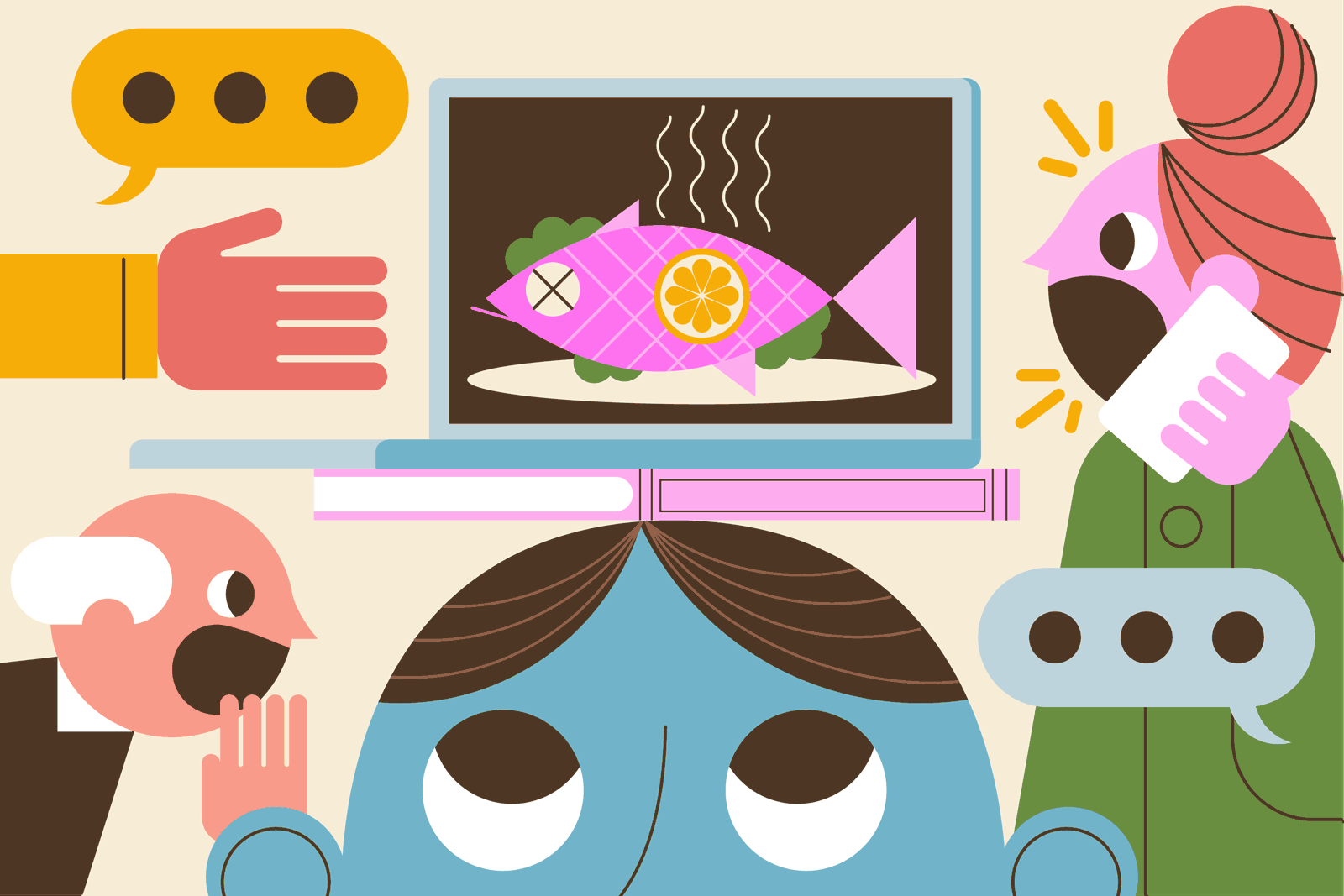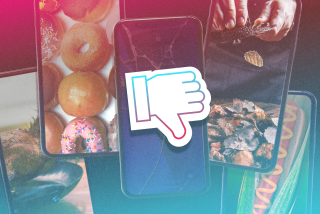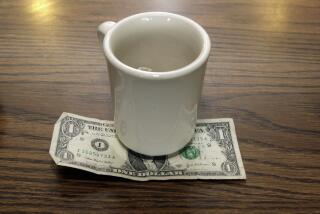Wrong fork? You should know better
Call it a black-tie believe-it-or-not: There she was, elegantly gowned and coiffed, fingernails polished to perfection, blowing her nose on a white linen table napkin.
It happened at a recent benefit in Beverly Hills. And that wasnât her only violation of good table manners: She left the soup spoon in the bowl, and at the end of dinner the knife and fork were helter-skelter on her plate -- not side by side, the way John Loring says they should be.
Tsk tsk. A dinner napkin should be used only for covering the lap or gently wiping the mouth, says Loring, who, as design director of Tiffany & Co. in New York, is one of the countryâs leading arbiters of decorum. Soup spoons are supposed to be left on the plate that rests under the bowl. And knives and forks should be placed together on the plate with the knife blade facing inward, not outward, âwhich was once considered terribly insulting -- almost tantamount to challenging somebody to a duel.â
Exposed blades are still considered âhostileâ in dining circles, Loring observes. And so, it seems, are poor table manners. Without proper manners, partygoers send a message of disregard -- not to mention cluelessness -- to their peers, say etiquette experts. With them, the social world can become their souffle.
Nothing new? Perhaps. But with the advent of the hurried lifestyle, the practice of good table manners has become secondary to takeout convenience. People who once dined at the family table are eating off of coffee tables and lap trays. Social events, too, have become more casual, with buffet-style food stations becoming as popular as formally served meals.
âBasic table manners just havenât been taught at home during the past 20 years,â says Sue Fox, author of âEtiquette for Dummiesâ and âBusiness Etiquette for Dummiesâ (Wiley & Sons). But an interest in their practice is coming back, she observes. And itâs beginning at the corporate level and trickling down to the social scene. âCorporations are realizing that people with that little bit of etiquette savvy are the ones to hire. And social types are realizing that poor manners may keep them from moving ahead.â
The premise of table etiquette is courtesy to others, explains Fox. âGood manners begin with respect. Thatâs the whole point.â If someone is placing their elbows lazily on a table surface, for example, theyâre sending a message of rude indifference. Good posture translates into attentiveness, Fox says.
Other basic tips: âRead up on the use of utensils, and remember, solids are to the left and liquids are to the right,â she advises. Memorize that little rule and youâll never butter anotherâs bun or tip his tulip of Champagne. âDonât talk with food in your mouth. Donât chew with your mouth open. Donât eat too quickly -- pace yourself with others. Donât start your meal until the host or honoree has begun,â she says. âAnd never lick your knife or gesture with your utensils.â
These days the savvy social mover is likely to use the European method of dining, in which the fork remains in the left hand throughout the meal, instead of the American way, in which it is transferred from the right to the left hand each time a knife is used. âThe European style of eating is definitely in because weâve become so global,â Fox says. âThis country is the only one that eats zigzag style.â Loring concurs. âThereâs something obnoxious about everybody crashing silverware around on the plates, all that activity to accomplish nothing,â he says.
When it comes to being a dinner party guest, Loring likes to remind people of a line written in one of Tiffanyâs manners books for kids: Your host or hostess did not invite you to dinner because they thought you were hungry. âHow many times do we see people sit down and instantly start chewing on a dinner roll?â he asks. âFirst, you engage your dinner partner in conversation.â
While they generally praise the behavior of partygoers, food managers have their own set of complaints about guestsâ table manners. Utensils improperly placed on plates or in bowls increase the chance of embarrassing spills, they say. And an improperly used napkin can result in, well, no serviette at all. Take a recent incident at Bastide, a new 80-seat Melrose Avenue restaurant so popular itâs booked for Friday lunches through mid-May. âThe worst thing Iâve seen was when we found two wads of chewing gum inside one of our French linen napkins,â says manager Donato Poto. âThat was really ugly. We had to throw it out.â
Restaurateur Joaquim Splichalâs famed Patina restaurant makes dinner party etiquette a little easier for guests. âWe donât have silverware at the table at all -- we bring the utensils with each course,â he says. âAnd weâre happy to explain the method of eating any dish.â
As L.A.âs chief of protocol, Elga Sharpe keeps in mind the rules of etiquette she learned as a little girl when she dines with dignitaries from around the world.
âI know how to use my utensils and I donât put my elbows on the table,â she says. âI never speak with my mouth full and I always look my dinner partner in the eye. Theyâre simple rules, but, adhered to, they take you anywhere.â
More to Read
Eat your way across L.A.
Get our weekly Tasting Notes newsletter for reviews, news and more.
You may occasionally receive promotional content from the Los Angeles Times.









